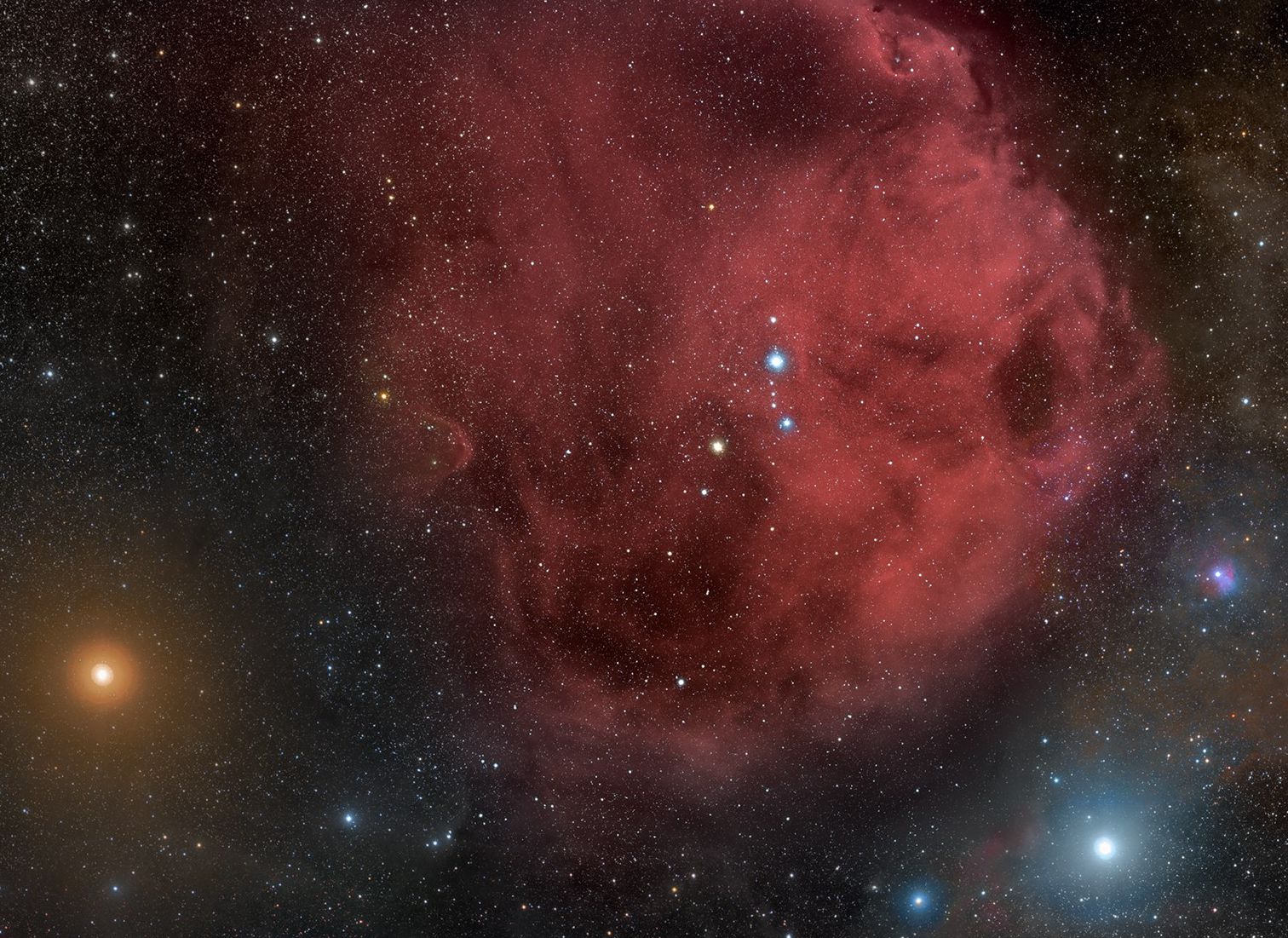Phi1 Orionis on:
[Wikipedia]
[Google]
[Amazon]
 Phi1 Orionis is a
Phi1 Orionis is a
 Phi1 Orionis is a
Phi1 Orionis is a binary star
A binary star is a system of two stars that are gravitationally bound to and in orbit around each other. Binary stars in the night sky that are seen as a single object to the naked eye are often resolved using a telescope as separate stars, in ...
system in the constellation Orion, positioned less than a degree to the south of Meissa
Meissa , designated Lambda Orionis (λ Orionis, abbreviated Lambda Ori, λ Ori) is a star in the constellation of Orion. It is a multiple star approximately away with a combined apparent magnitude of 3.33. The main components are ...
. It is visible to the naked eye with an apparent visual magnitude
Apparent magnitude () is a measure of the brightness of a star or other astronomical object observed from Earth. An object's apparent magnitude depends on its intrinsic luminosity, its distance from Earth, and any extinction of the object's lig ...
of 4.42. The distance to this system, based upon an annual parallax shift of 3.0 mas, is around 1,090 light-year
A light-year, alternatively spelled light year, is a large unit of length used to express astronomical distances and is equivalent to about 9.46 trillion kilometers (), or 5.88 trillion miles ().One trillion here is taken to be 101 ...
s.
This is a single-lined spectroscopic binary star system with an orbital period
The orbital period (also revolution period) is the amount of time a given astronomical object takes to complete one orbit around another object. In astronomy, it usually applies to planets or asteroids orbiting the Sun, moons orbiting planets ...
of 3,068 days and an eccentricity
Eccentricity or eccentric may refer to:
* Eccentricity (behavior), odd behavior on the part of a person, as opposed to being "normal"
Mathematics, science and technology Mathematics
* Off- center, in geometry
* Eccentricity (graph theory) of a ...
of 0.22. It is a member of the young Lambda Orionis cluster
The Lambda Orionis Cluster (also known as the Collinder 69) is an open star cluster located north-west of the star Betelgeuse in the constellation of Orion. It is about five million years old and roughly away from the Sun. Included within the cl ...
and is roughly 7 million years old. The primary component is a B-type giant star
A giant star is a star with substantially larger radius and luminosity than a main-sequence (or ''dwarf'') star of the same surface temperature.Giant star, entry in ''Astronomy Encyclopedia'', ed. Patrick Moore, New York: Oxford University Press ...
with a stellar classification
In astronomy, stellar classification is the classification of stars based on their spectral characteristics. Electromagnetic radiation from the star is analyzed by splitting it with a prism or diffraction grating into a spectrum exhibiting t ...
of B0 III. It has over 15 times the mass of the Sun
The solar mass () is a standard unit of mass in astronomy, equal to approximately . It is often used to indicate the masses of other stars, as well as stellar clusters, nebulae, galaxies and black holes. It is approximately equal to the mass of ...
and around 6.3 times the Sun's radius. Nothing is known about the secondary companion. It does not contribute a significant amount of light to the combined spectrum.
References
External links
* {{DEFAULTSORT:Phi1 Orionis Spectroscopic binaries B-type giants Orionis, Phi Orion (constellation) Durchmusterung objects Orionis, 37 036822 0261761876
Events
January–March
* January 1
** The Reichsbank opens in Berlin.
** The Bass Brewery Red Triangle becomes the world's first registered trademark symbol.
* February 2 – The National League, National League of Professional Ba ...